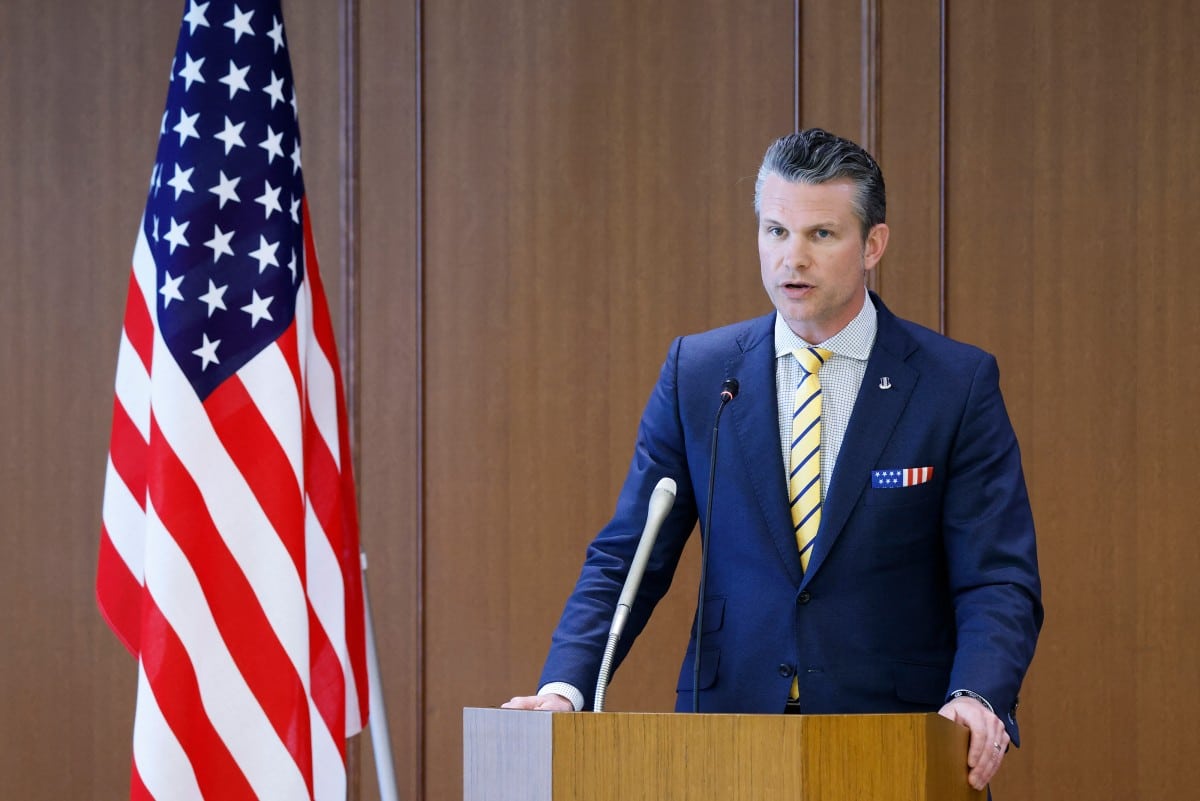
US Secretary of Defense Pete Hegseth attends a joint news conference with Japan’s Defense Minister Gen Nakatani (not pictured) at the Ministry of Defence in Tokyo on March 30, 2025. Agence France-Presse
TOKYP — The United States will ensure “robust, ready and credible deterrence” in the Indo Pacific, including across the Taiwan Strait, US Defense Secretary Pete Hegseth said Sunday, calling Chinese actions “aggressive and coercive”.
“America is committed to sustaining robust, ready and credible deterrence in the Indo Pacific, including across the Taiwan Strait,” Hegseth said in Japan after talks with counterpart Gen Nakatani.
“Japan would be on the front lines of any contingency we might face in the western Pacific and we stand together in support of each other.
READ: West PH Sea: Trump admin to ramp up deterrence vs China threat – Hegseth
“That’s why today Minister Nakatani and I talked about the severe and urgent security environment around Japan, and we discussed what we are going to do about it,” Hegseth told reporters.
Beijing has stepped up military pressure in recent years around Taiwan, including near-daily air incursions, and has not ruled out using force to bring the island under its control.
READ: US defense chief: ‘We don’t seek war, we seek peace, cooperation
“Today’s meetings have affirmed the extraordinary strength of America’s alliance with Japan. After today’s discussion, it is clear to me that our alliance is the cornerstone of peace and security in the Indo Pacific negotiation,” Hegseth said.
“America and Japan stand firmly together in the face of aggressive and coercive actions by the Communist Chinese.”
Okinawa base
Japan and the United States are each other’s top foreign investors, and 54,000 US military personnel are stationed in Japan — mostly in Okinawa, east of Taiwan.
But Trump’s “America First” approach could mean weakening the US commitment for security in the region as well as more pressure — like in Europe — on allies to spend more.
Hegseth said that he “did not talk specific numbers” about defense spending in his talks with Nakatani and Prime Minister Shigeru Ishiba.
“We’re confident that Japan will make the correct determination of what capabilities are needed inside our alliance to make sure we are standing shoulder to shoulder,” he said.
“They have been a model ally, and we have no doubt that will continue. But we also both recognize everybody needs to do more.”
Japan has been shedding its strict pacifist stance, moving to obtain “counterstrike” capabilities and doubling military spending to the NATO standard of two percent of GDP.
But Washington could ask it to do more, with Trump’s nominee for a key Pentagon policy position, Elbridge Colby, calling for defence spending of three percent of GDP.
Nakatani said Sunday that he told Hegseth that spending should be “implemented based on Japan’s own judgement and responsibility”.
“I also explained Japan has continuously been working on a drastic strengthening of out defense capability… on which we received understanding from the US side,” he said.
Hegseth said the Tokyo meetings “affirmed the extraordinary strength of America’s alliance with Japan”.
“President Trump has also made it very clear, and we reiterate, we are going to put America first. But America first does not mean America alone,” he added.
“America and Japan stand firmly together in the face of aggressive and coercive actions by the Communist Chinese.”

